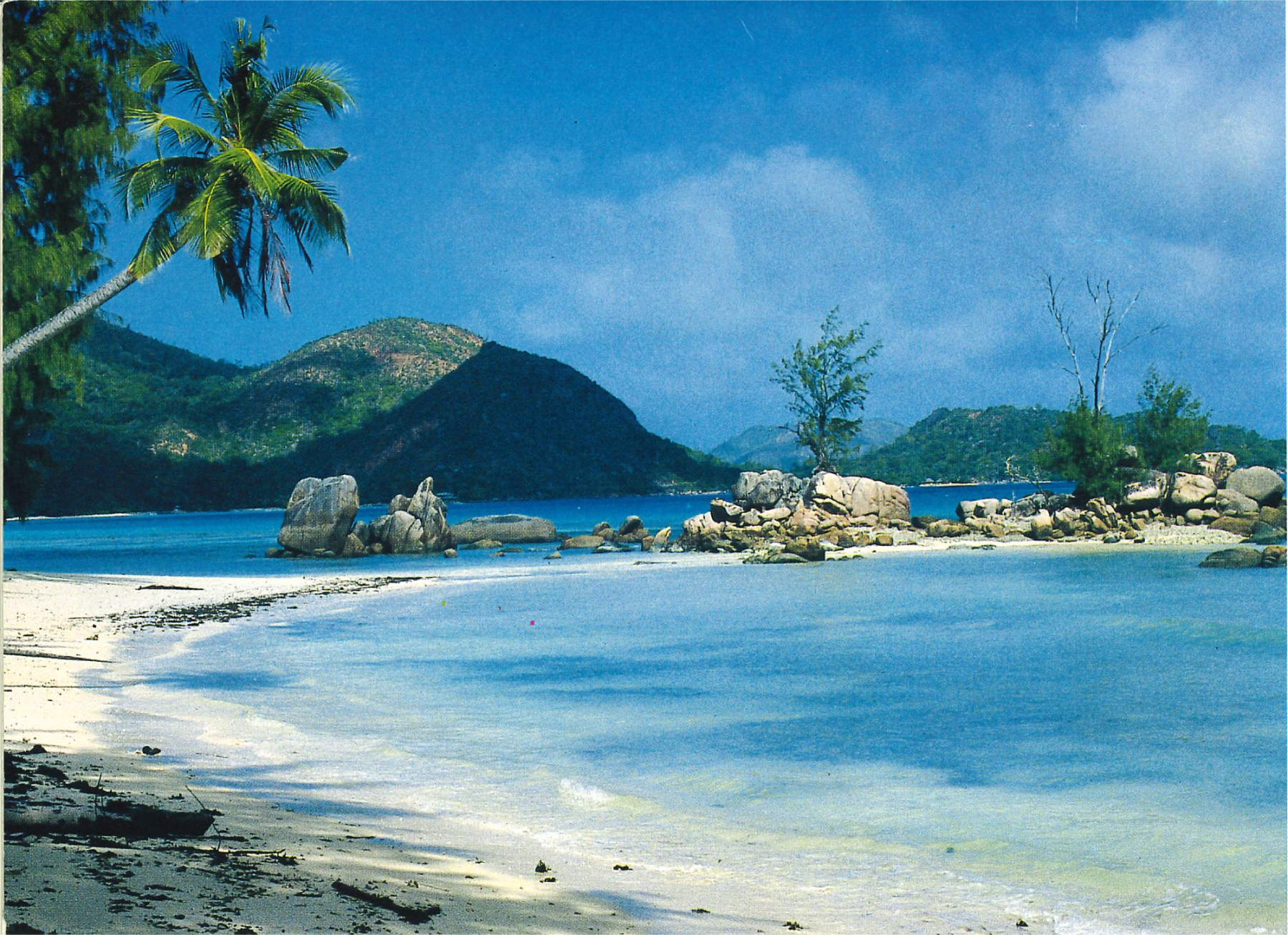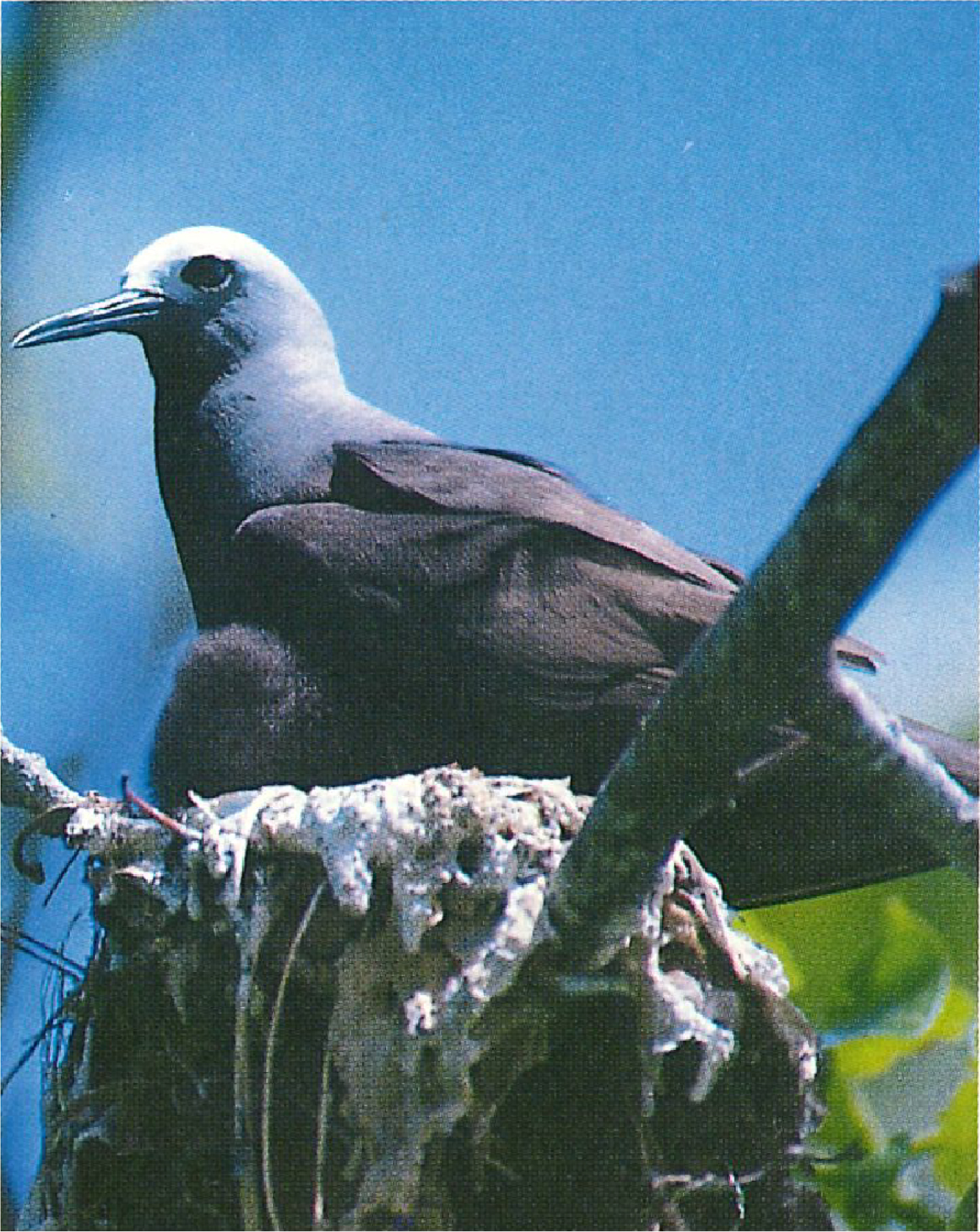Scattered across a vast expanse of Indian Ocean and well removed from any other continent, the 85 islands that comprise the Seychelles are best known for their unique and overwhelming natural beauty.
Thirty-five spirited personalities, each aglow with its own singular energy, bob up and down with the undulating movements of the school bus.
Chattering, shouting, teasing, taunting, giggling, laughing, constantly in motion – like the churning ocean around them – they are like, and unlike, children all over the world.
What distinguished them here this brilliant morning was their daily journey to school. A 30-minute bus ride down this narrow, steep, winding dirt road delivered them through some of Praslin Island’s most wildly beautiful coastline. The view that unfolded, the view that was part of their everyday lives, was breathtaking – tempestuous turquoise breakers smashing against indifferent rocks, foaming cauldrons of water spilling on the road, impenetrable, jungled mountains sweeping to the sea.

Did these 35 young souls see their island as I did, as thousands and thousands of tourists do each year – the very perfection of natural beauty?
“So many tourists come here and say how beautiful the Seychelles are, but to me it is not beautiful,” the brother to a Seychelloise friend told me as he drove us through Praslin’s verdant, primeval-looking forests.
“The average Seychellois does not even realise how beautiful his home is, unless he goes overseas and comes back,” said Mr. Marston St. Ange, whose great-grandfather came from France to La Digue to establish a vanilla plantation.
Maxim, the owner of the guest house where we stay, looks upon his island’s natural beauty with a practical eye. Almost all his needs can be satisfied from within a few steps of his home.
He empties his fish trap every morning at the jetty just across the street. His garden is virtually dripping with both familiar and exotic-looking fruits – bananas, paw paw, bread fruit, golden apple, coeur de boef, pomme Eduard, pineapple, avocado and, of course, coconut. He makes his own natural remedies from extractions of bark and root found in his garden, for illnesses as varied as headache to impotence. He shapes bowls and containers from dried coconut shell, presses coconut meat for oil; and at night he climbs the coconut tree outside his house, milks it for his evening toddy, and empties it into a hand-made bamboo container.
But Maxim understands well how outsiders see his little ‘Garden of Eden’. “Was it beautiful for you?” he asks each day as we return from yet another unbelievable excursion. When we gush with superlatives, his face settles to an expression of satisfaction. That’s what they all say….I can almost hear him thinking.

More than anything, the Seychellois (an intriguing mixture of European, African and Asian peoples) are an inextricable part of this vast kaleidoscope of ever-changing landscapes they call home. They are surrounded by the wild but gentle elements – mountain, rock, sea, wind, sky and luxuriant vegetation, encompassed by them, embraced by them, become part of them. This is reflected in indigenous contemporary art. It is seen in the small touches in house and garden that attempt to bring Nature even closer – potted plants inside and outside the house, natural decorations such as seashells, dried flowers, wood arrangements, and in many, the famous coco de mer, hung in some special place of honour.
The great natural beauty of the Seychelles has three over-riding qualities. It is primeval, reminding us of the plant and animal life inhabiting the Earth when the islands were part of the super-continent Gondwanaland long before human beings emerged. It is pure, owing perhaps to the late human inhabitation of the islands (late 18th century). It is dream-like, deriving in part from the islands’ extreme isolation. So dream-like is it that when you have left and are out of its circular spell, you find yourself blurting out – ‘Did that really exist? Was I really there?’
Pierre de Possession
The Seychelles were first referred to by seafaring Portuguese; but there is substantial evidence that the Arabs already knew of the islands long before the Europeans ‘discovered’ them.
In the 16th, 17th and 18th centuries, pirates used these islands as a base for their forays on richly laden merchant ships following well established Indian Ocean trade routes.
But it wasn’t until November 1, 1756 that the ‘Pierre de Possession’ was set down by Captain Morphey and the islands came under France’s jurisdiction. The islands were administered as a military garrison and were given the name ‘Sechelles’, in honour of the Controller General of France at that time – Viscount Moreau de Sechelles.
In the 1770s, the first colonists arrived; and not long after that slaves were brought in from East and West Africa to clear the land and work the fruit and vegetable farms which supplied the many trade vessels using the islands as a water and food supply point.
Later cotton, coconut, vanilla, cinnamon and patchouli oil plantations were established; and it was during this era that massive destruction of native forests took place – for building materials, ship repairs and fuel, particularly for the islands’ numerous distilleries. Additionally, land tortoises and hawksbill turtles were so extensively hunted that they were quickly brought to within a hair’s-breath of extinction.
It was only through the far-sighted vision of one of the islands’ first commandants, Jean Baptiste Malavois - that the islands were saved from irreparable damage.

Malavois administered the islands with intelligence, insight, common sense and pragmatism. A great lover of Nature, he was architect of a decree that resembled a modern-day conservation manifesto; it immediately banned the capture of tortoises and hawksbill turtles and set firm controls on the felling of trees.
The example was set then, and has persevered throughout the country’s brief history. Today the Seychelles is vanguard on the world conservation stage – on a number of fronts, from whaling zones, to forests, to the numerous fascinating species of animals and birds it is home to.
That grand national effort is evident nearly everywhere you go in the Seychelles today – from Praslin’s Vallee de Mai (preserved primeval forest), to the coral reefs of Denis Island, teeming with a mind-boggling array of exotic fish, to the fabulous bird sanctuaries of Cousin, Aride and Bird Island.
Birdlife
In truth, the islands’ birdlife may be one of the most lasting memories you take home with you from the Seychelles. It can be such a magnificent experience!
We are on our way to Cousin Island, in a small, brightly painted rigger. Rocking through pockets of waves, intimidated by the size and power of these moving mountains, we watch through squinting eyes the engulfing sea turn scores of gorgeous shades of blue at a single glance.
Once on this tiny, white-sand jewel, the air suddenly turns fetid, the unmistakable smell of accumulated bird droppings.

Thousands of birds circle above us, gliding on air currents or diving for fish.
The Brown noddy is the first we see – several dozen nested in one tree, chicks peeking from underneath their mothers’ protective feathers. The males, busy flying to and from the roosts, collect dead leaves to fortify nests, or to provide food for their families; they are so close overhead we can nearly reach out and touch them.
Walking along the shaded footpath, hundreds of skinks scurry under our feet. They are the rubbish collectors of this people-less island, eating fresh bird droppings and sometimes getting into skirmishes when food is scarce.
They have nothing to worry about on this day. It is mating season; and at this time it is estimated that this 27-hectare island holds about one million noddies.
Fairy terns look very much like ballet dancers, so graceful and elegant is their flight above us. In a tree hollow, a fledgling White-tail tropic bird, feathers all afluff, looks at us trustingly, its fearlessness speaking volumes about the care of wild animals and birds vigilantly observed in the country.
And so the day trip went, opening our eyes further to the unique natural history of this tiny island.
Whether you are exploring botanical curiosities, counting fish species in spectacular coral reefs, swimming the warm, crystal clear waters, biking, hiking, wind-surfing or diving – or simply stretching out on one of the many picture-postcard beaches, the Seychelles will always leave you pondering its immense beauty, and Nature’s many strange and wondrous ways.
© copyright: Linda Pfotenhauer
Photographs by Allen Pfotenhauer

Incredibly enjoyable reading. I feel like I’m there with you.